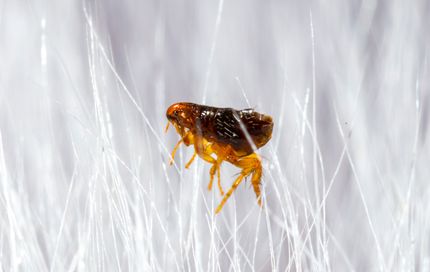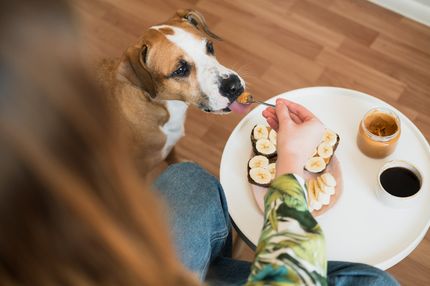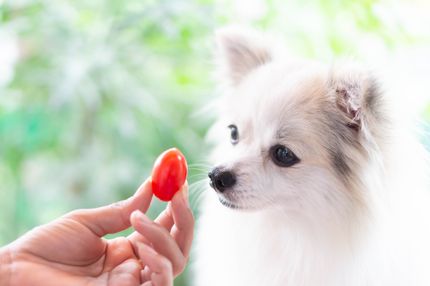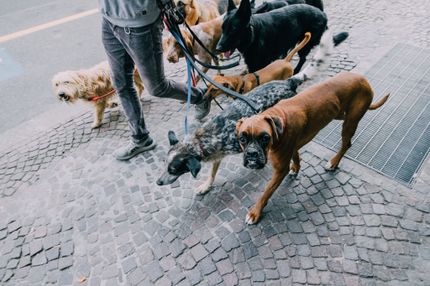Facts & Origin
Havanese and Lhasa Apso Mix - a hybrid breed
The Havanese and Lhasa Apso are a so-called mixed breed, created from the cross of a Havanese and a Lhasa Apso. They are sometimes referred to as "Lavanese" and have a fun, happy and loving nature. They are also known for their charm and affection. The Lavanese is a very affectionate, energetic and playful dog that is also quite intelligent. They have a medium-length, soft coat that comes in a variety of colors, from white to black and brown to gray. Their coat is neither too dense nor too thin and they are easy to groom. Due to their natural alertness, they are also known as good watchdogs. This makes the Lavanese an ideal family dog, gentle, loyal and alert, but also entertaining and playful.
| Alternate Name | - |
| Origin | Cuba - Tibet |
| Life expectancy | 12 - 16 years |
| Care requirements | high-maintenance |
| Activity level | low |
| FCI group | not recognised |
| AKC group | not recognised |
| KC group | not recognised |
More Havanese mixes
More Lhasa Apso mixes
Attitude, character and temperament of the breed
Possible character traits of Havanese and Lhasa Apso mix - Such is probably his nature.
The Havanese and Lhasa Apso mix breed is small, intelligent and very affectionate. They are persistent and energetic and love to spend all day with their families. Once they build trust with a person, they will love them and bond closely with them.
However, it is important to train this breed well. They need a lot of perseverance and love to teach them what is right and what is wrong. Their intelligence makes it easier for the owner to teach them everything they need to know. They will also learn what acceptable behaviors are in relation to other people, animals and objects.
This breed is also very loyal and can be trained very easily. When they are comfortable, they will bond with their family and become very affectionate. Their nature makes them an ideal companion for children. They are gentle and love to play with children. Because of their friendliness and sociability, they make excellent pets.
Both breeds are also very happy in a flat environment. They are very active, but do not react to stress. They are also quite uncomplicated when it comes to feeding, as they do not need to eat much meat. However, they do like to enjoy the company of people.
As dogs that are kept in apartments, they need to be walked regularly to keep them comfortable. They should also be exercised regularly to ensure that they have both mentally and physically stimulating activities.
Overall, Havanese and Lhasa Apso mixed breeds are an ideal breed for people looking for an intelligent, loyal and affectionate pet. With proper training and care, they can be a loving and loyal companion for many years to come.
Character
Usage
What diseases can occur in Havanese and Lhasa Apso mix.
Havanese Lhasa Apsos are a popular hybrid dog breed. Also known as Havapoo, these dogs are bred by crossing the Havanese and the Lhasa Apso. It is a very friendly little dog that needs a lot of love, care and attention to stay healthy. Like any other breed, Havanese Lhasa Apsos crossbreeds have certain diseases that make them susceptible.
Some common problems associated with the Havapoo include eye diseases, allergies, and skin problems. They are also prone to respiratory problems, degenerative myelopathy, and some congenital neurological abnormalities.
Havapoos are prone to a particular eye problem called keratoconjunctivitis sicca (KCS). This problem occurs when the eyes do not produce enough tears, which can cause dryness, redness and irritation. KCS can cause serious eye disease if not treated in time.
Allergies are another common condition in Havapoos. Allergies can cause dogs to itch severely and develop an uncomfortable coat.
Skin problems, such as fungal diseases, are also very common in Havapoos. Some diseases can cause infections and eczema in the skin.
Respiratory problems are also common in Havapoo mixes. They can be caused by allergic reactions, viral infections, and other diseases and can lead to severe lung disease and infections.
Degenerative myelopathy is a neurological condition that is common in Havapoos. It can cause difficulty walking, loss of balance, and muscle wasting. It is a chronic condition that unfortunately has no cure.
Finally, havapoos are also prone to some congenital neurological abnormalities. These include cerebellar ataxia, tremors and epilepsy. These conditions can lead to motor skills and learning difficulties if not properly treated.
Therefore, it is important that Havapoos be screened regularly for possible health problems. If anything seems worrisome or a symptom worsens, a veterinarian must be seen immediately. With proper treatment, Havapoos can live very well with these conditions and be happy for many years.
What does this mixed breed look like?
A Havanese and Lhasa Apso mix breed has a soft, woolly coat that is thin and silky. It can be a variety of different shades, from white to gray, black, brown, red and silver-gray. The mane is usually longer than the rest of the coat and falls between the shoulders on the sides of the dog. The back can be many different colors, but the most common colors are gold, white or gray. They also have a single white coat on the chest and face. Unlike other mixed breeds, this type has a lower allergy to humans.
What are breed characteristics of this mix dog?
A Havanese and Lhasa Apso mix breed has a soft, curly coat and is a medium sized, strong dog with long ears. Their muzzle is medium long and slightly curved. The back is straight and the legs are relatively short, but very strong. A fully grown dog is between 22 and 28 cm high and weighs between 4 and 8 kg.
| Fur length | medium - long |
| Fur | wavy - flat coated |
| Ear shape | Floppy Ear |
| Tail | fanned out - rolled up |
| Anatomy | - |
| Size ♀ | 20 - 27 cm |
| Weight ♀ | 4 - 8 kg |
| Size ♂ | 20 - 27 cm |
| Weight ♂ | 4 - 8 kg |
| Suitable For | Beginner, Seniors, Beginner, Children, Seniors |
Known Diseases
Hip dysplasia (HD)
Hip dysplasia (HD) is a genetic condition in dogs where the hip joint is not shaped properly. This leads to pain, stiffness and restricted movement.
Eye diseases
Often occur with allergies and intolerances.
Patellar luxation
Patellar luxation is the term used to describe a displacement of the kneecap, which is one of the most common causes of lameness in dogs.
FAQ
-
Havapso dogs are affectionate and playful. They are intelligent, bright and quick to learn new things. They are very family oriented, but somewhat shy with strangers.
-
A fully grown dog is between 22 and 28 cm high and weighs between 4 and 8 kg.
-
Havapso dogs are best trained with patience, consistency and care. They learn well on positive reinforcement with rewards.
-
In order to teach a Havapso to live with other dogs, it is important to help him with social interactions early on. It is also helpful to establish a routine of walking, playing and other interactions.





















